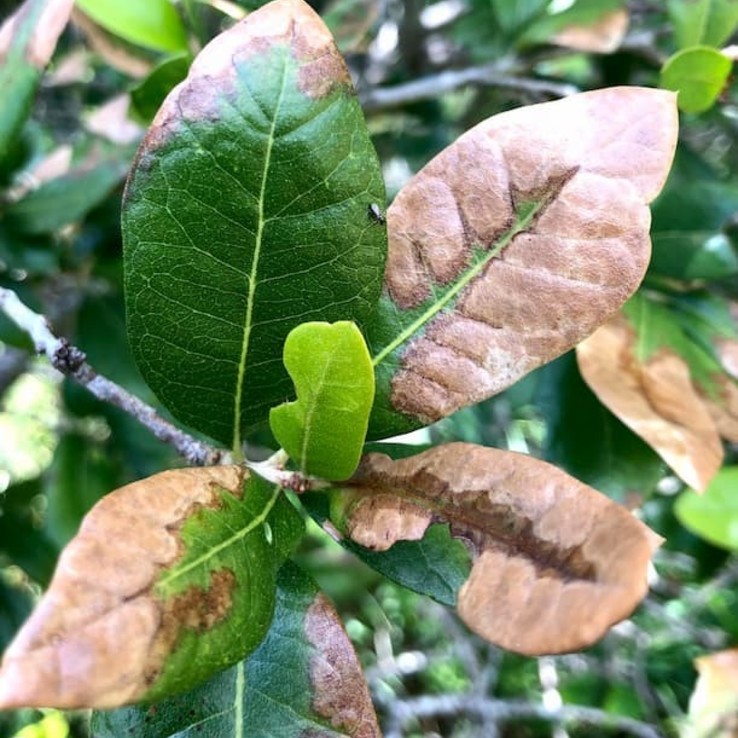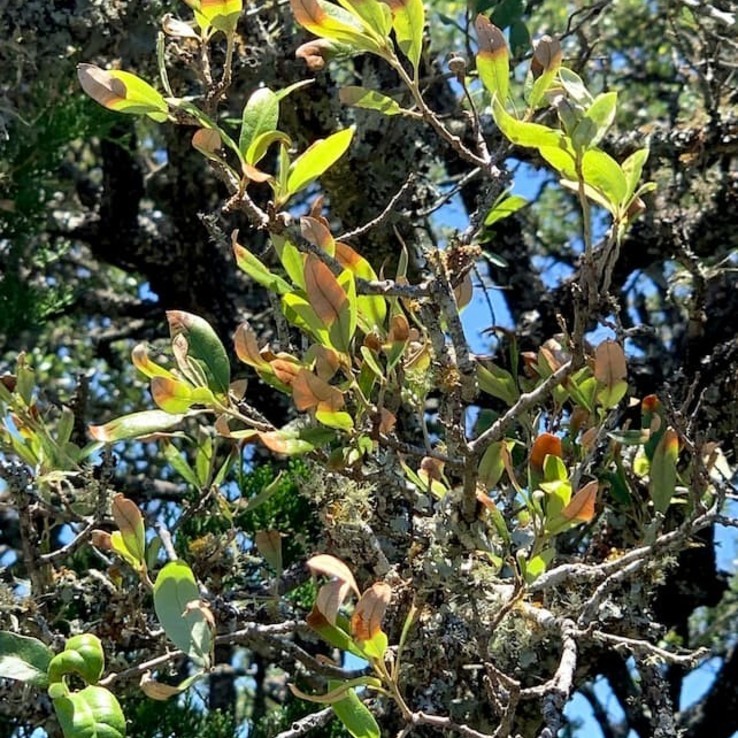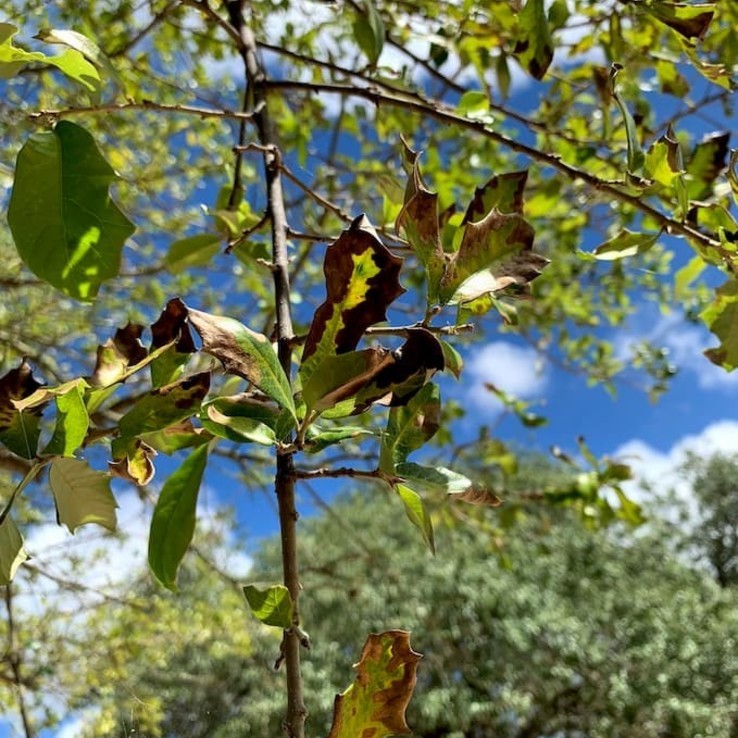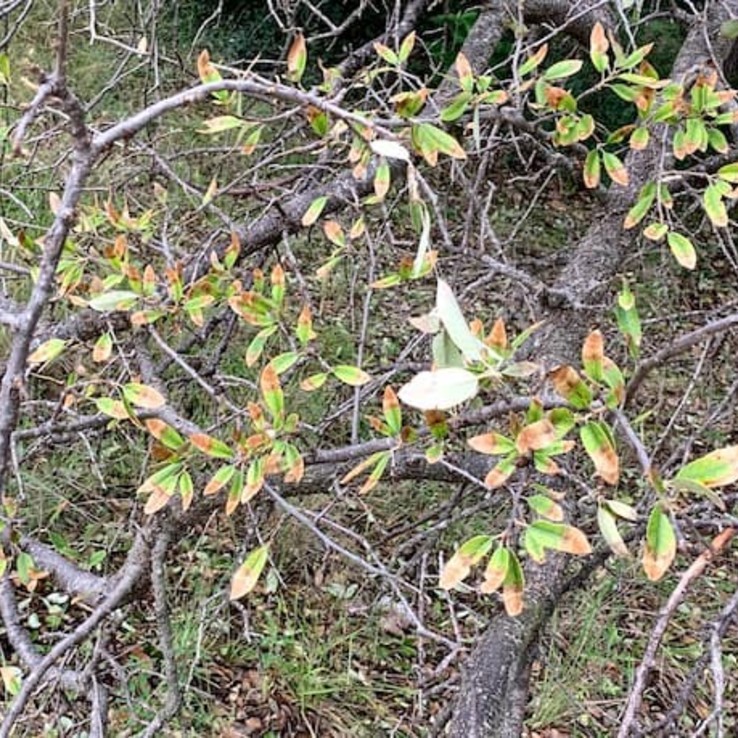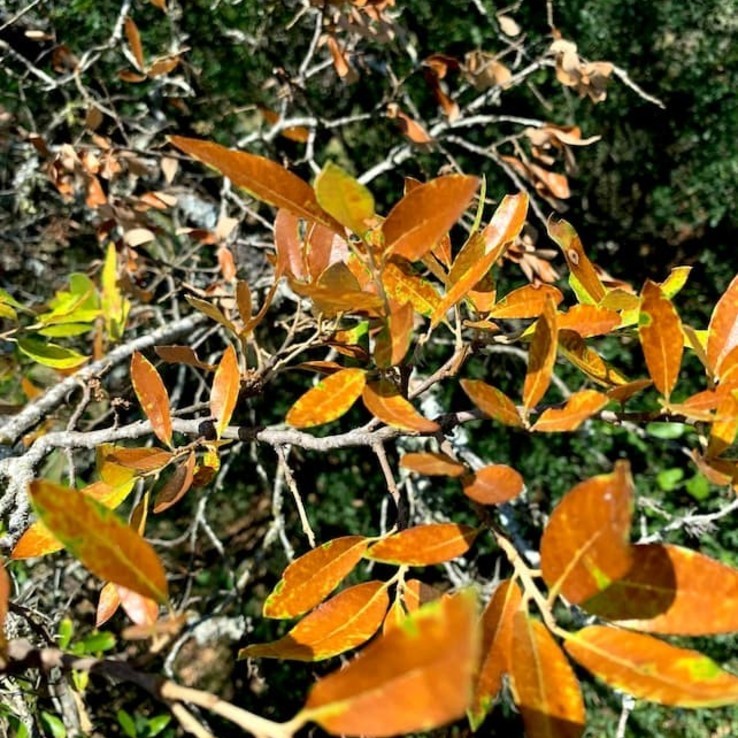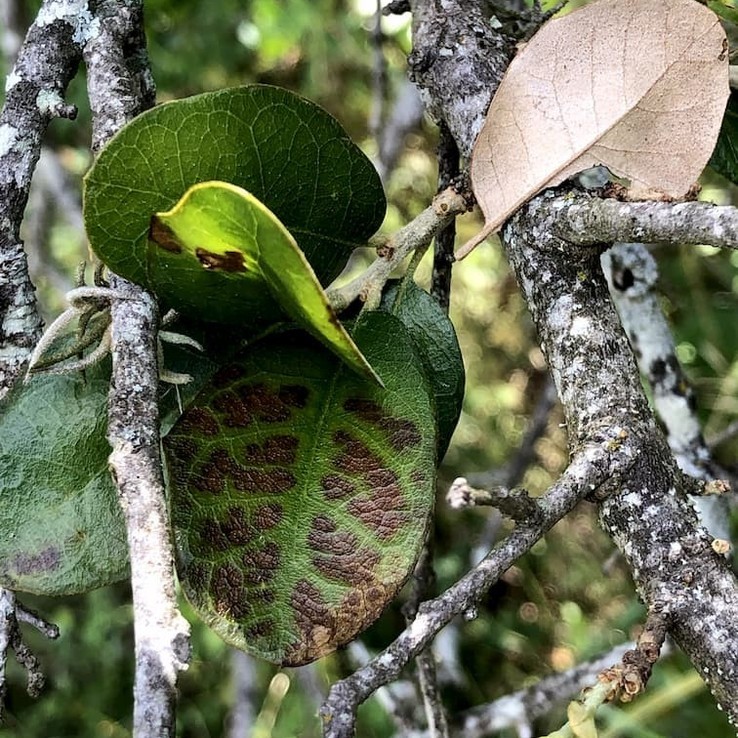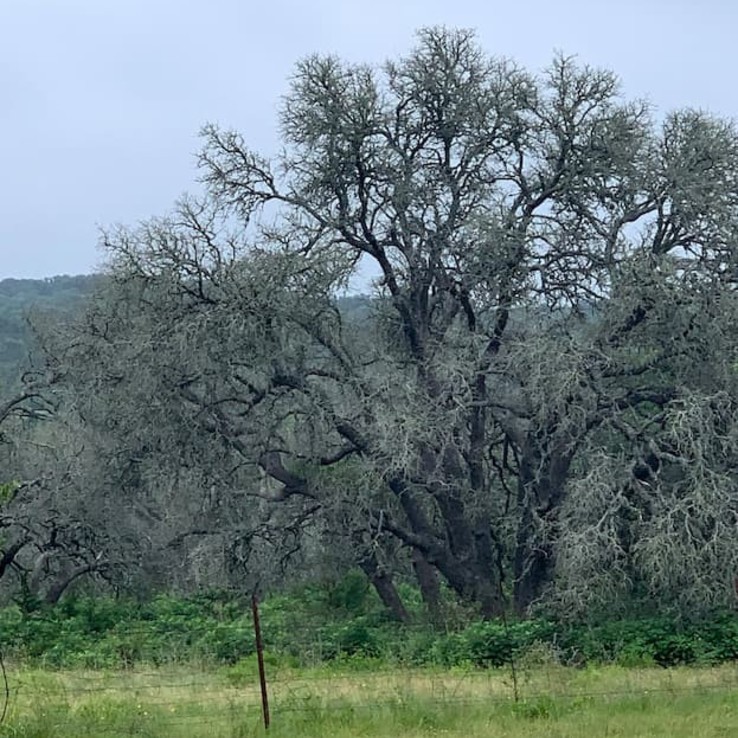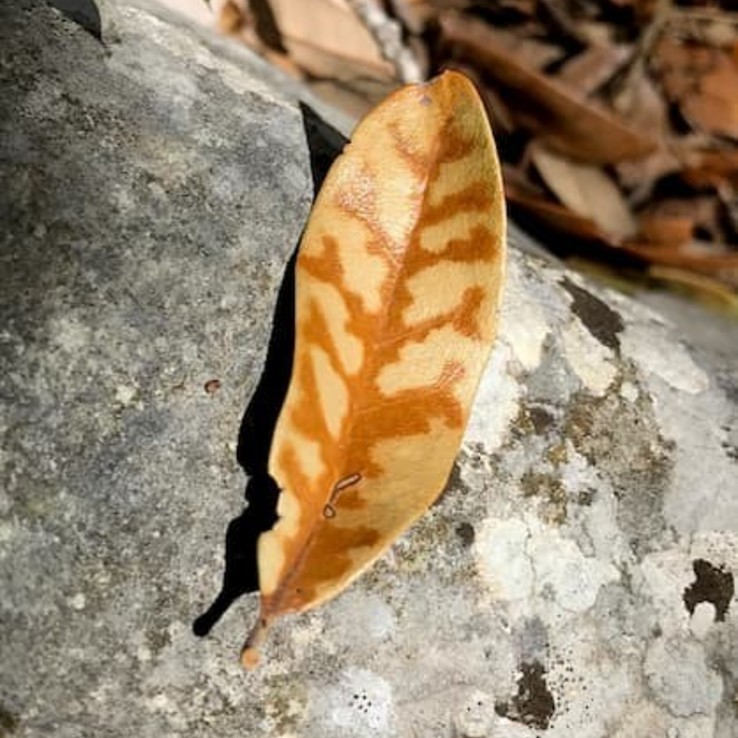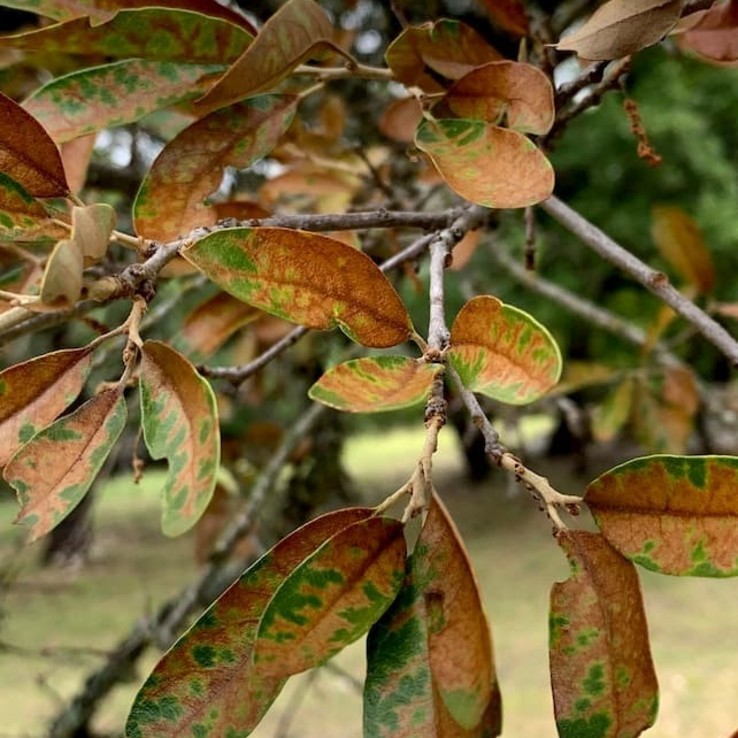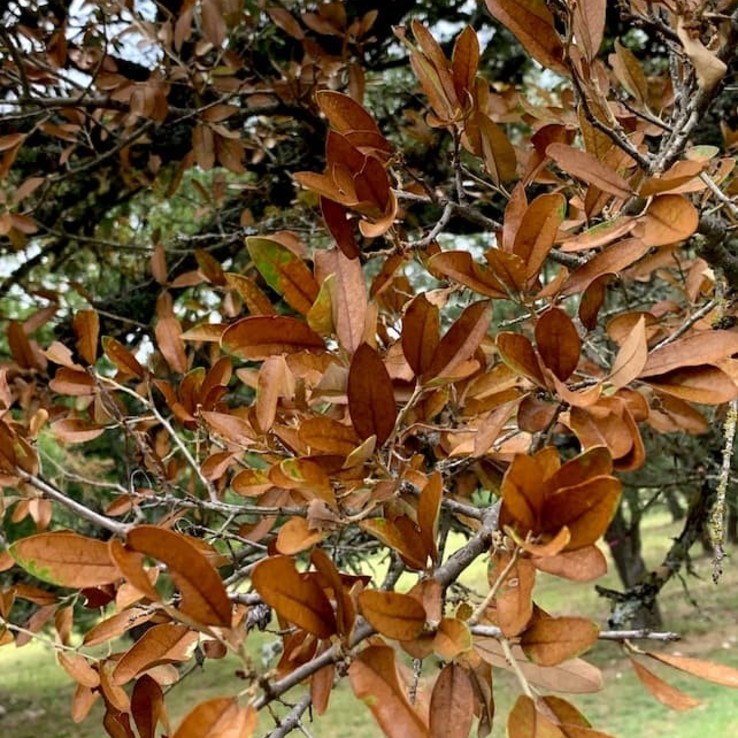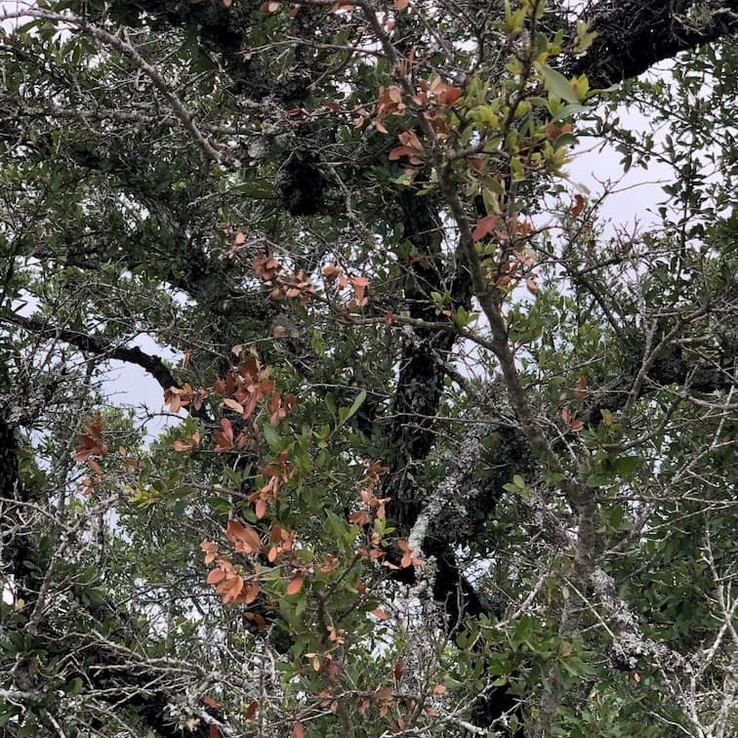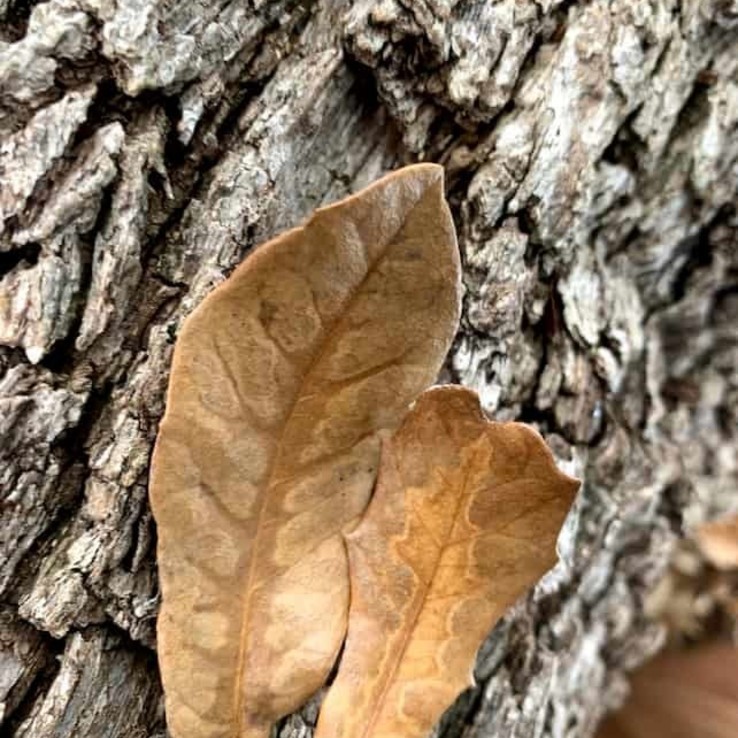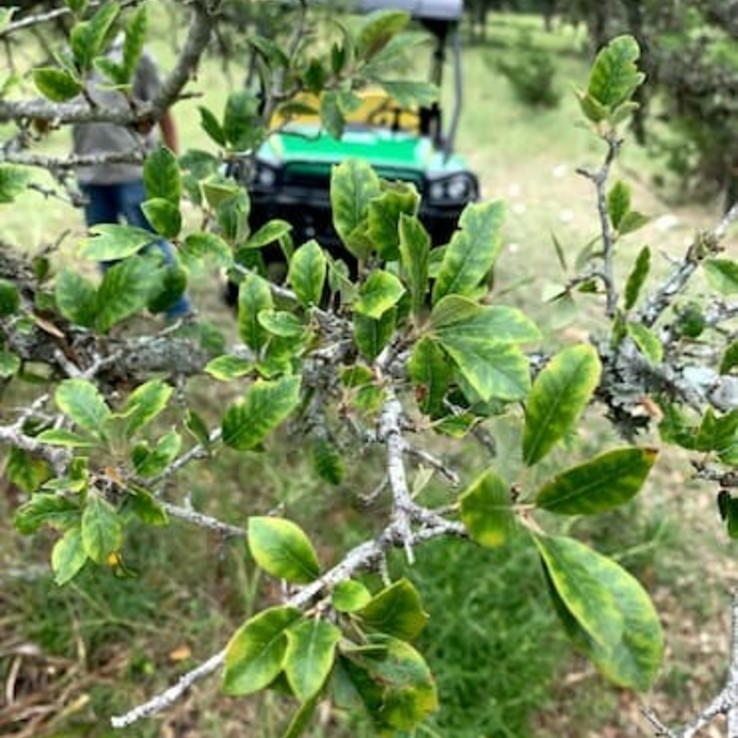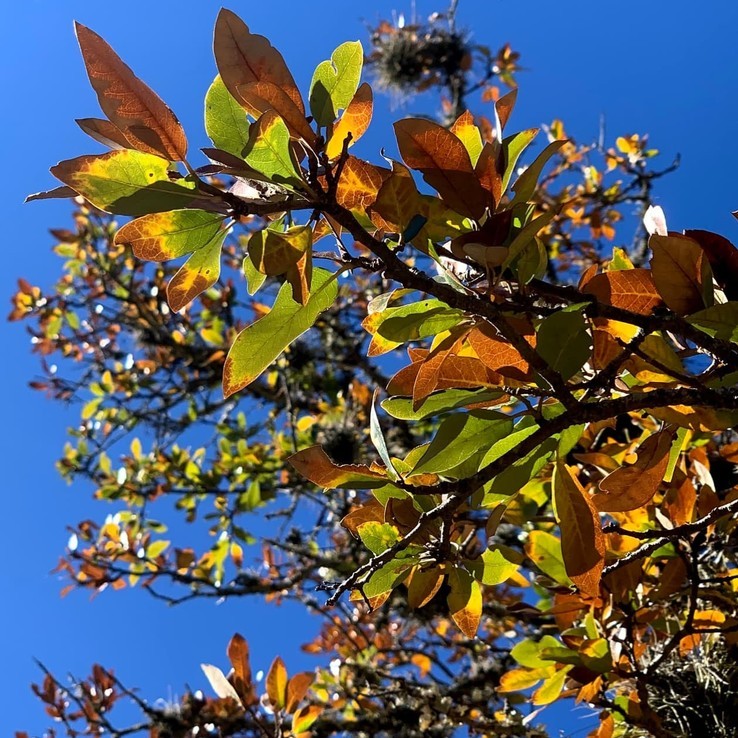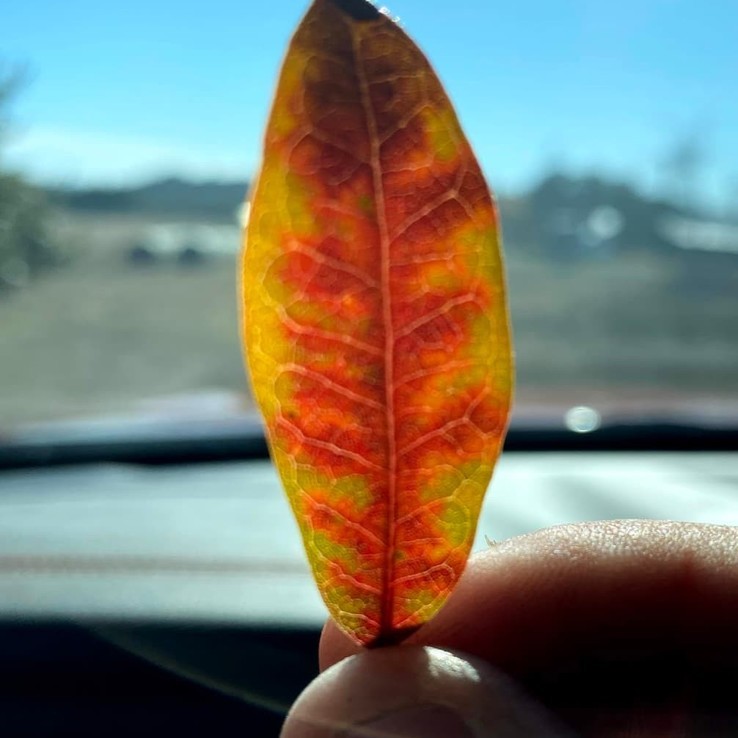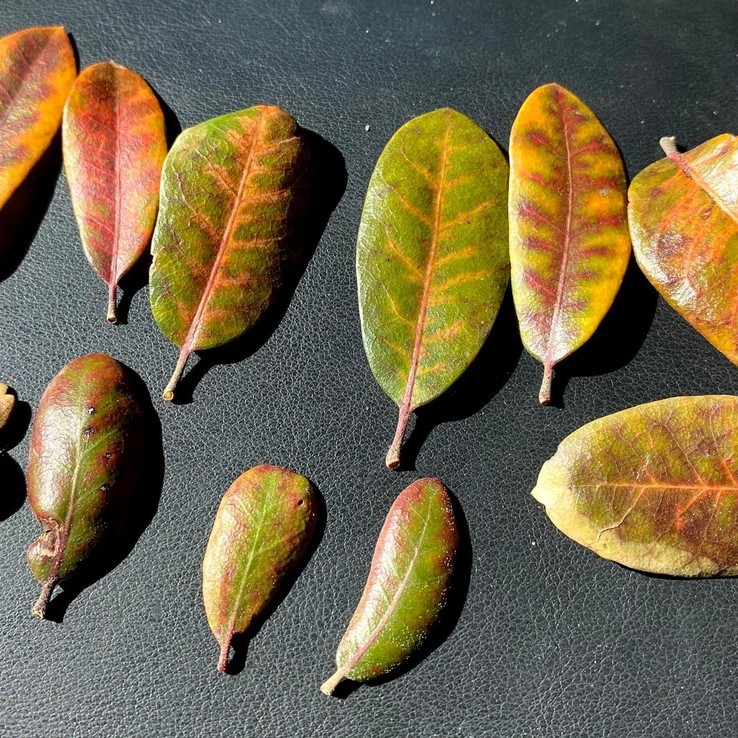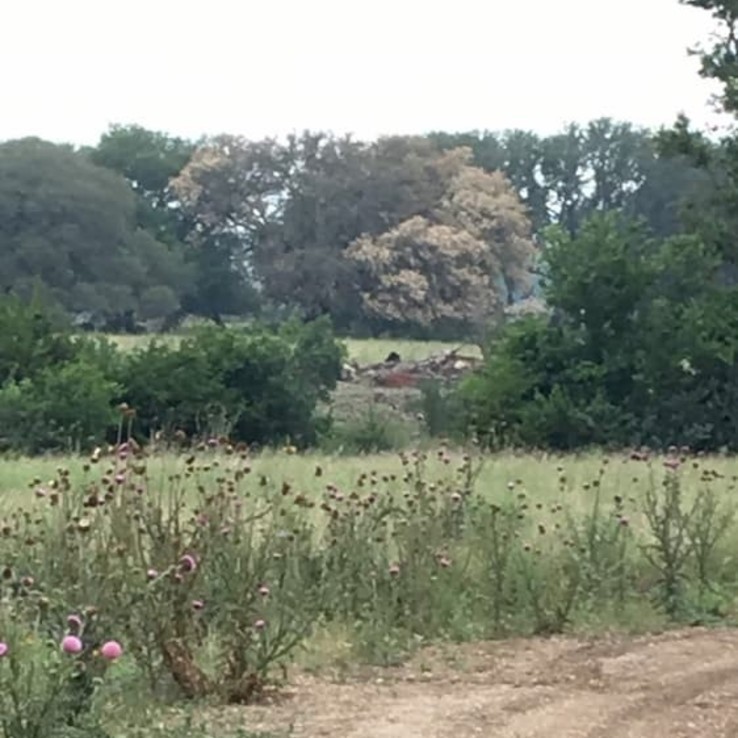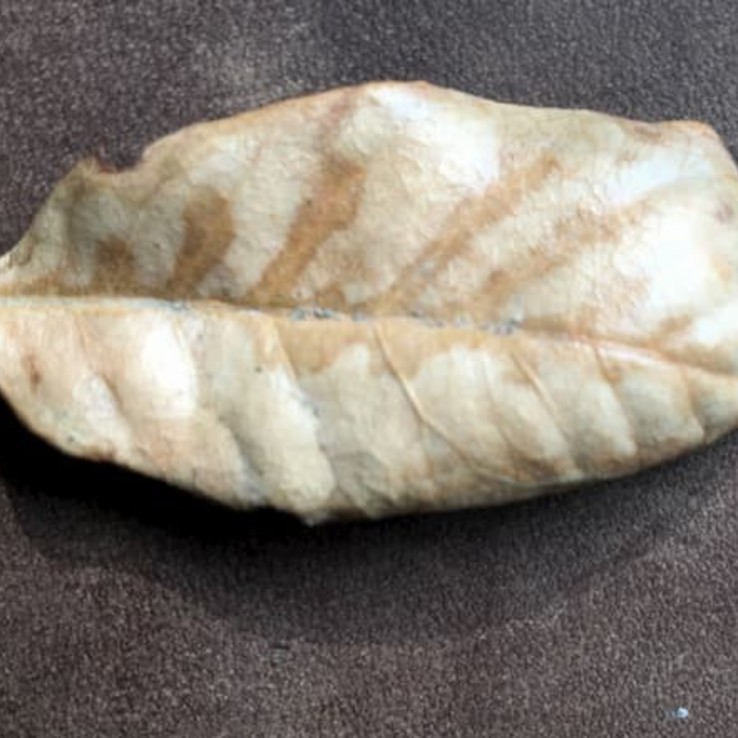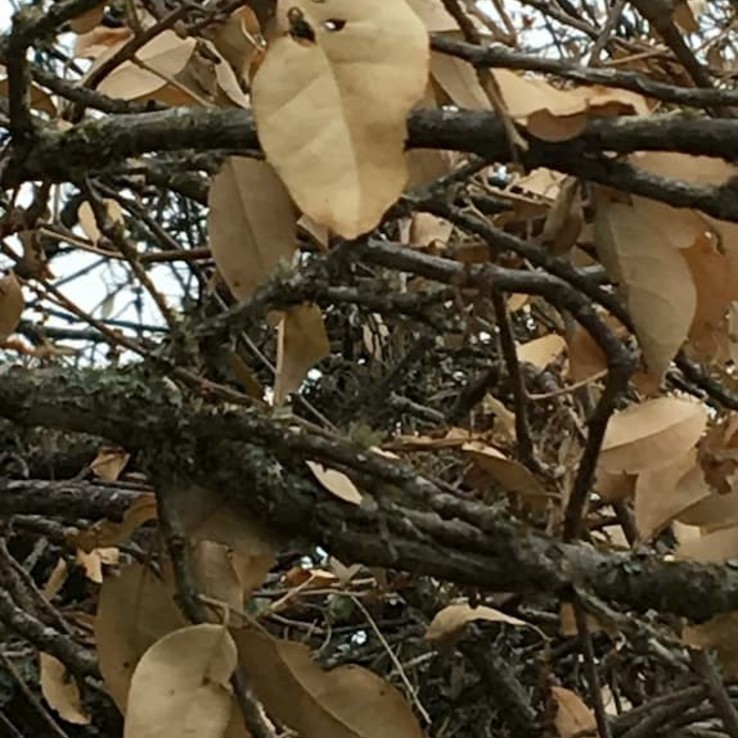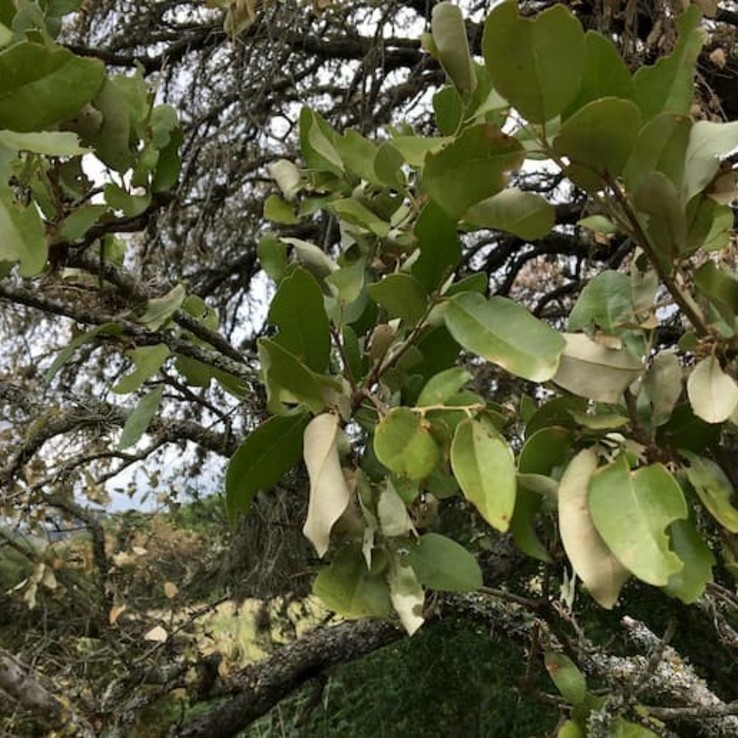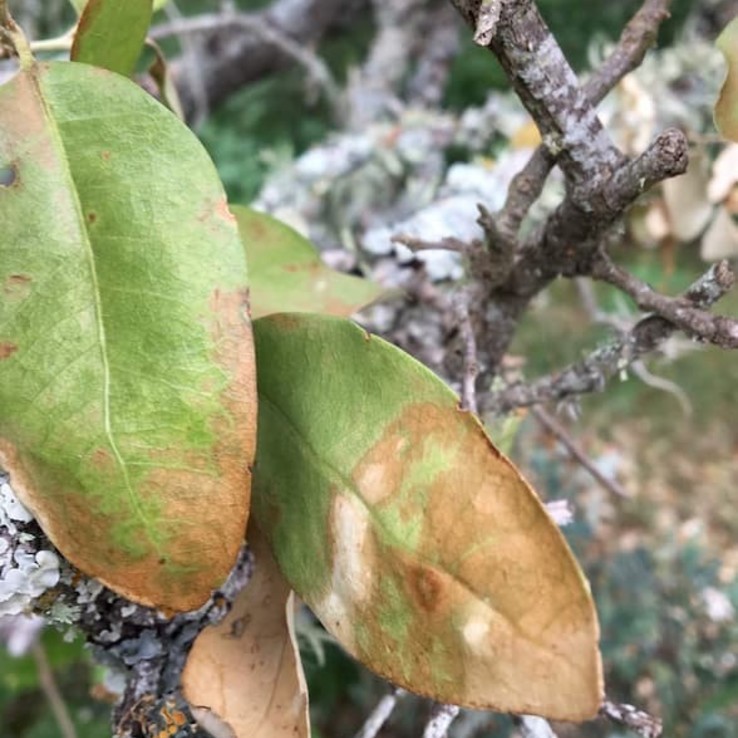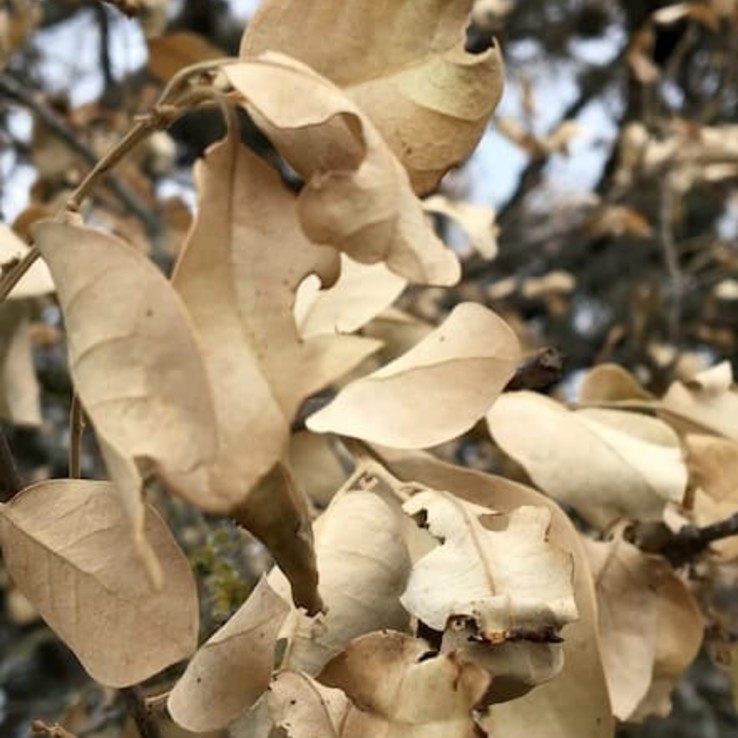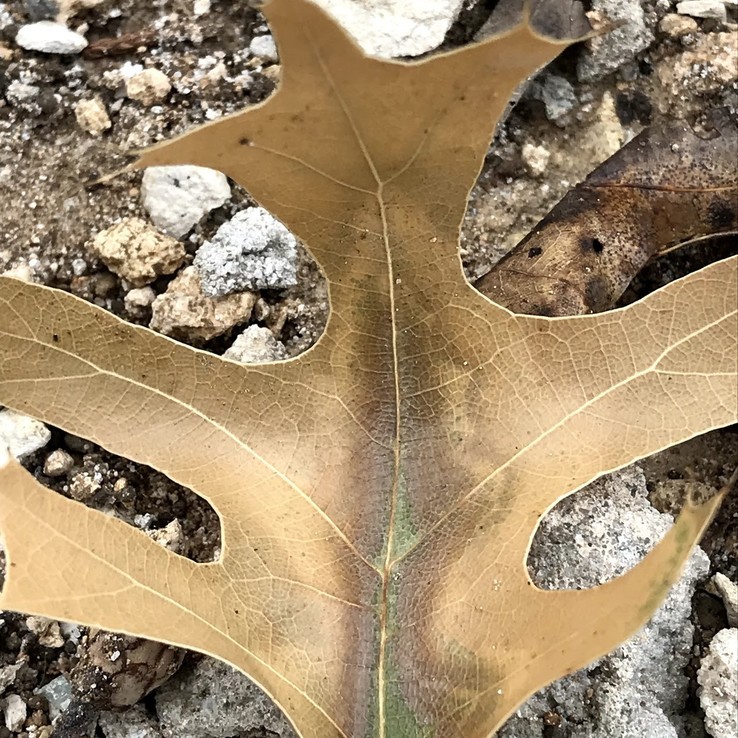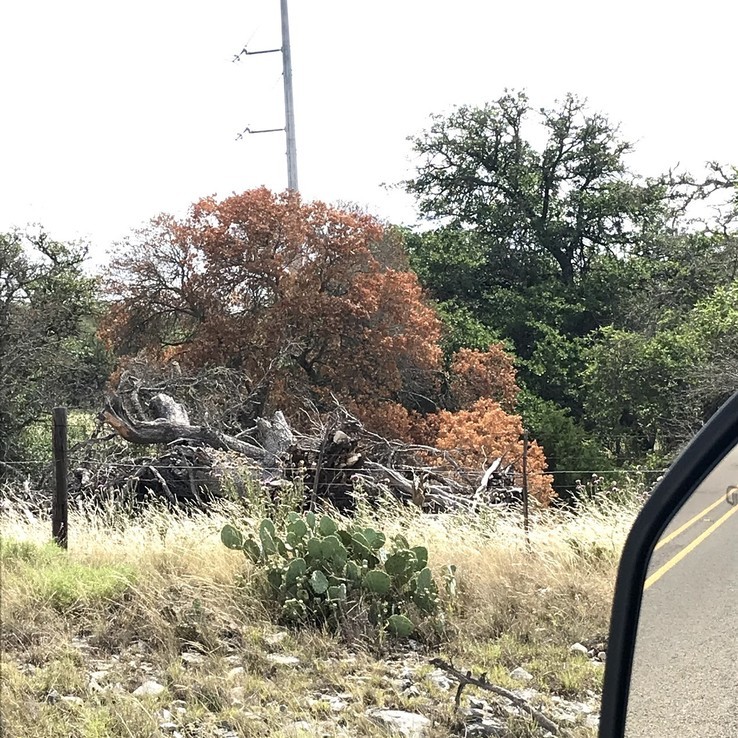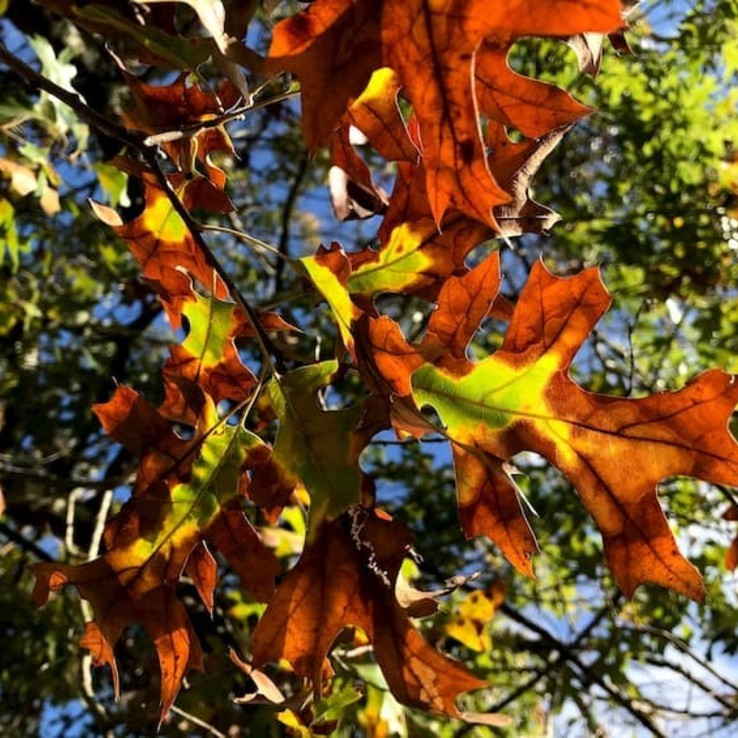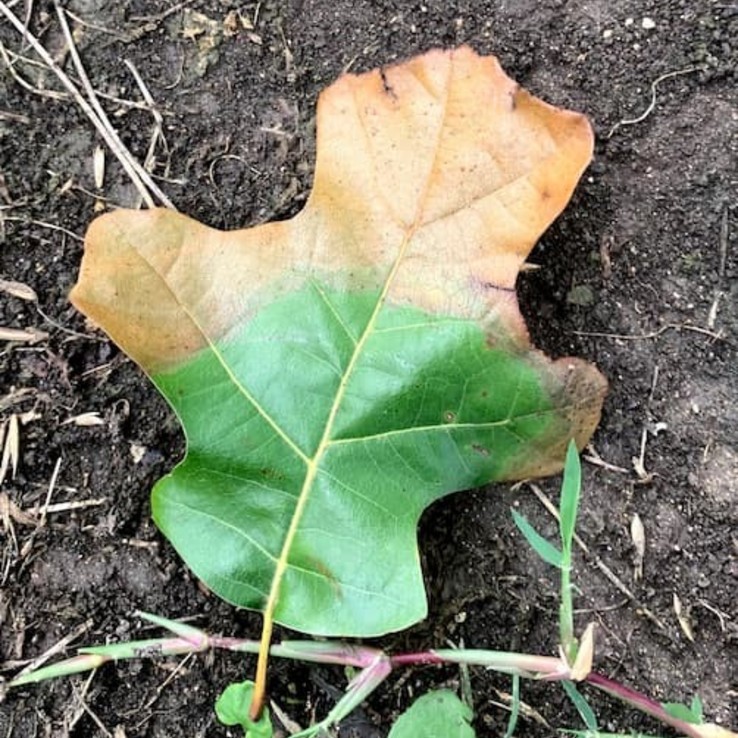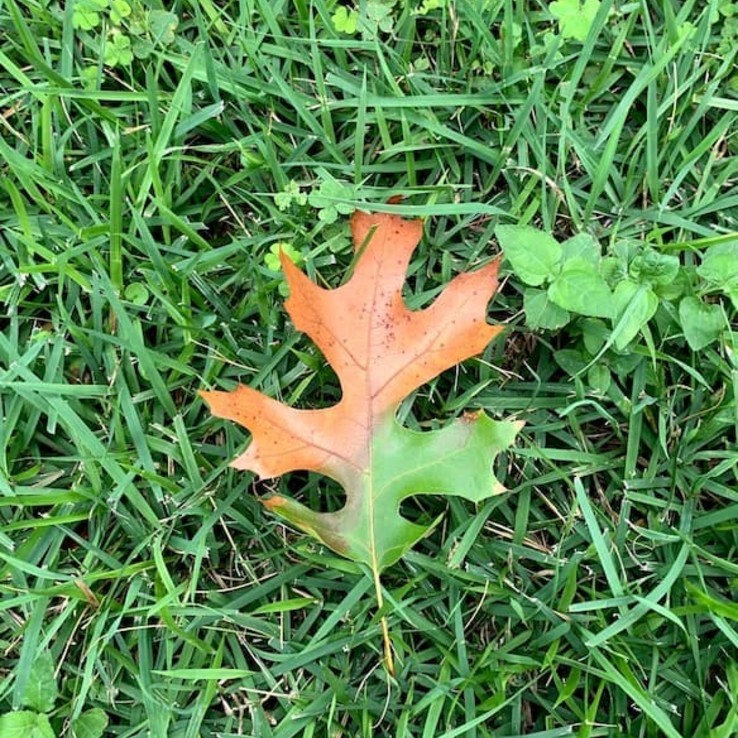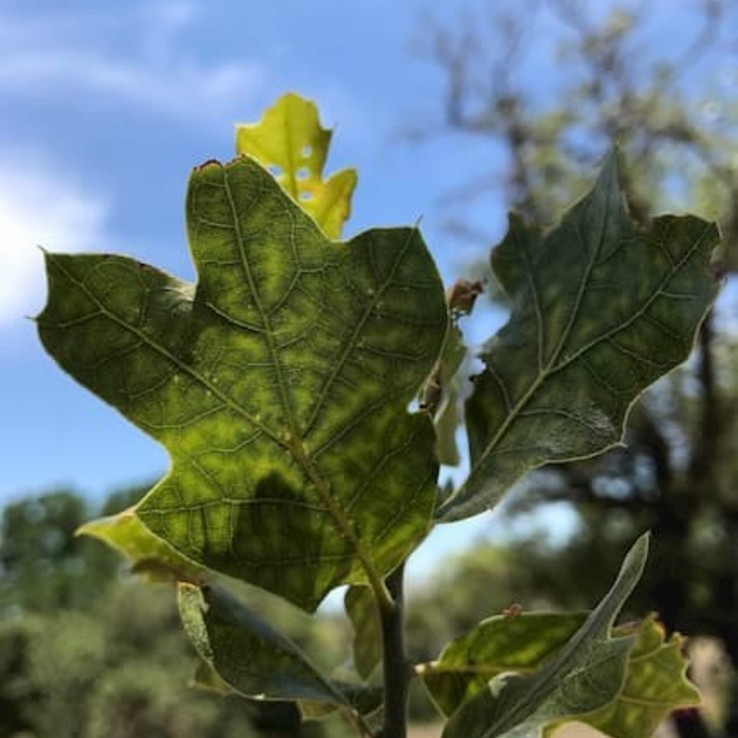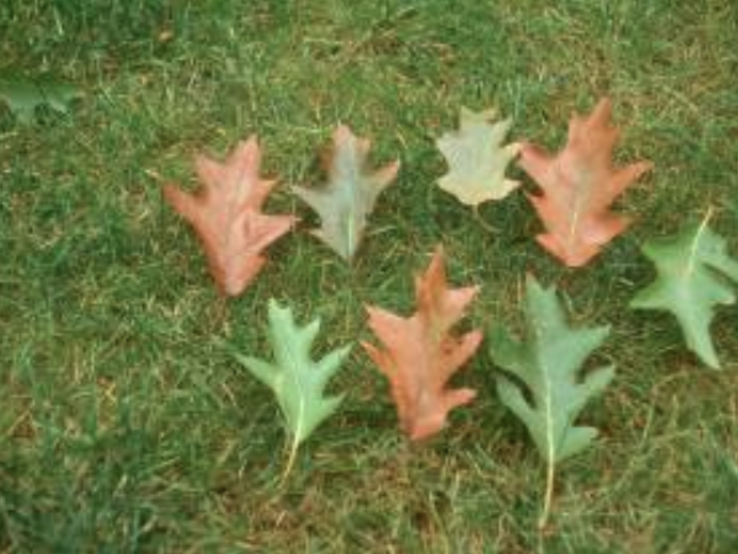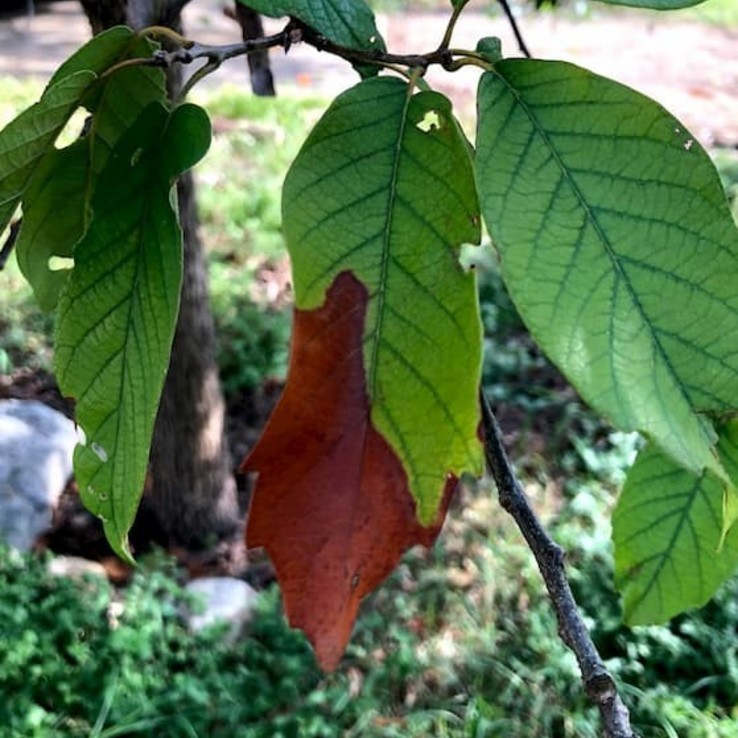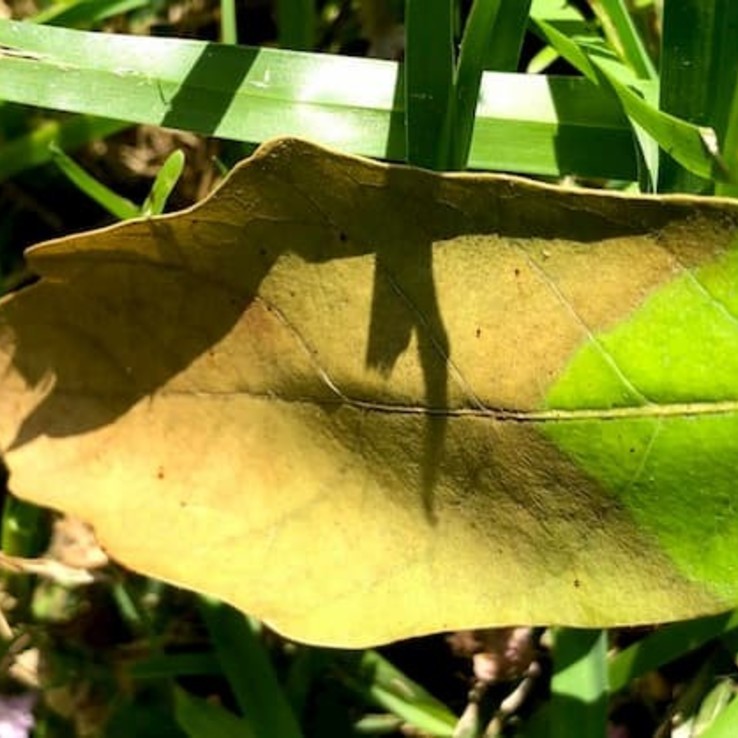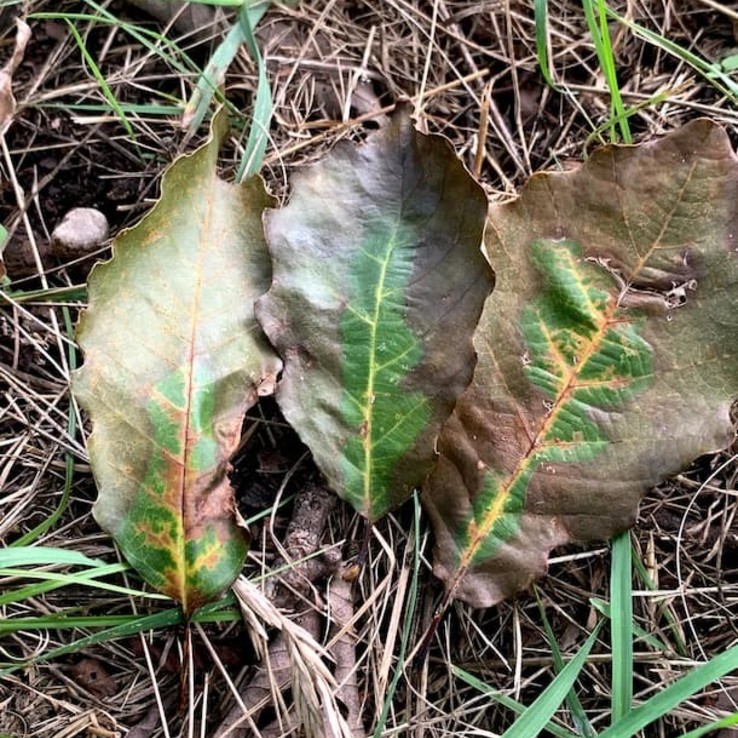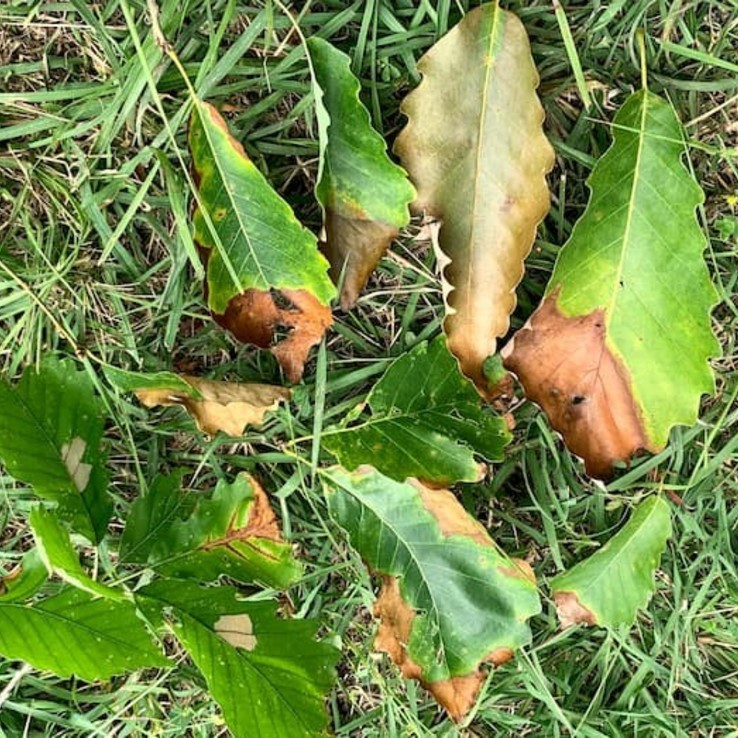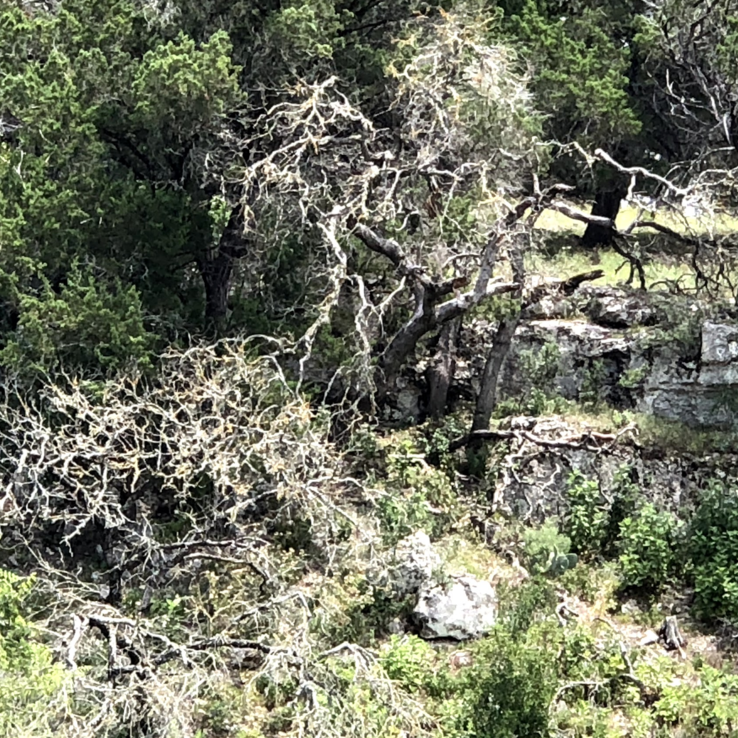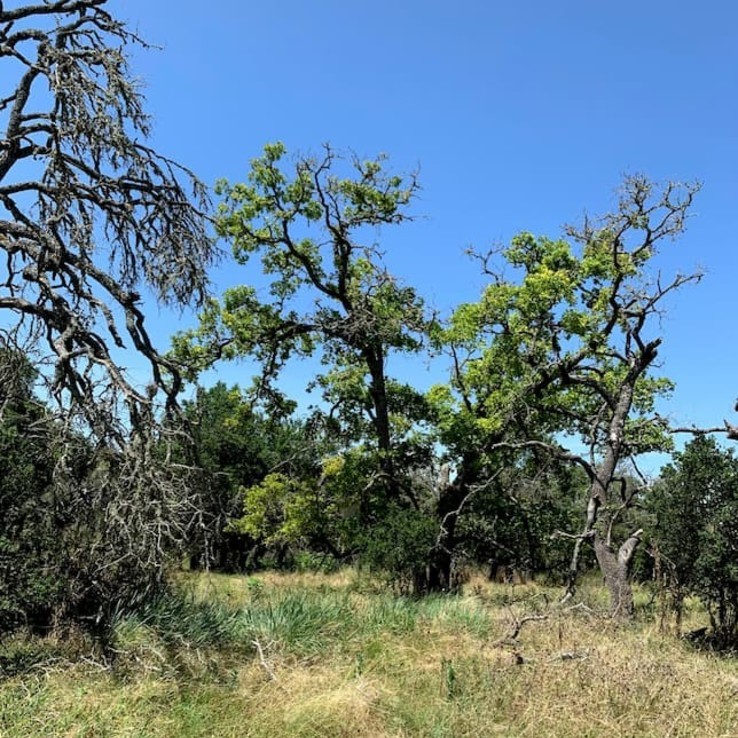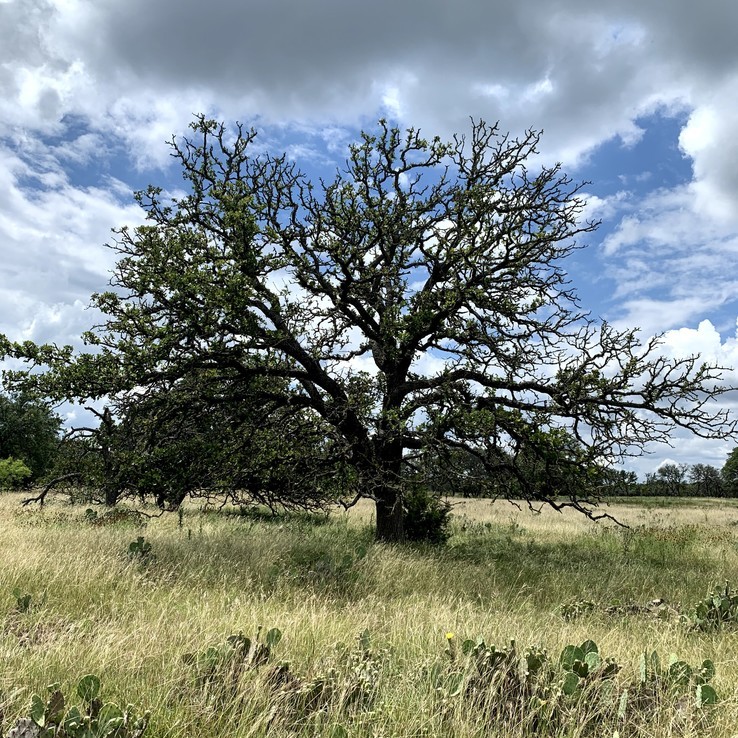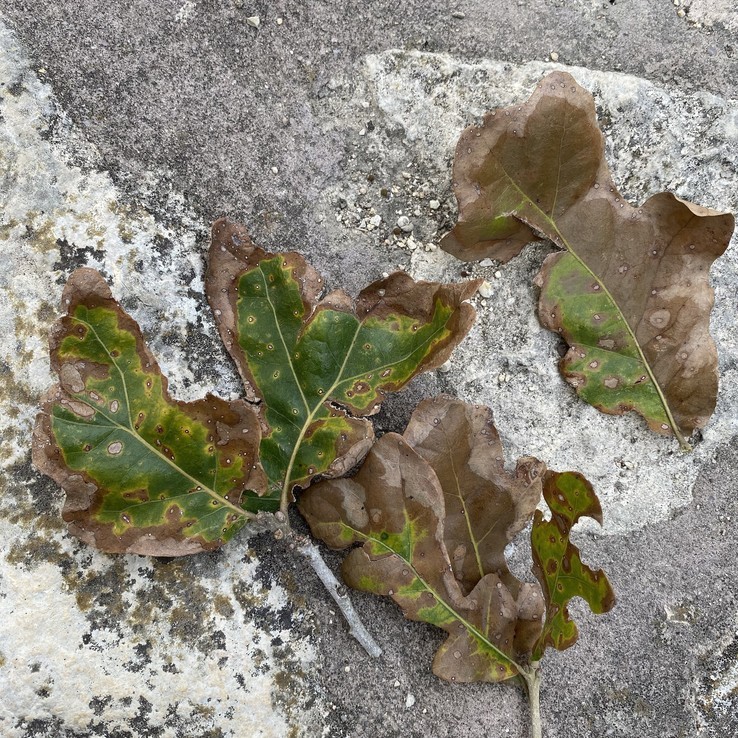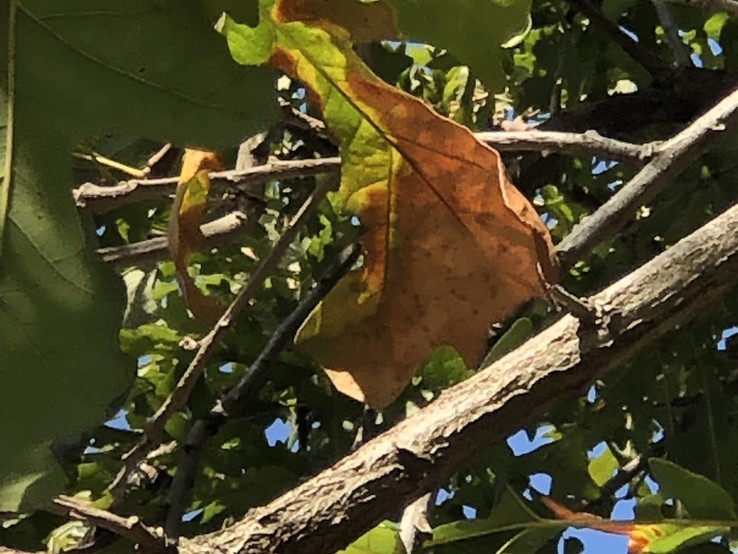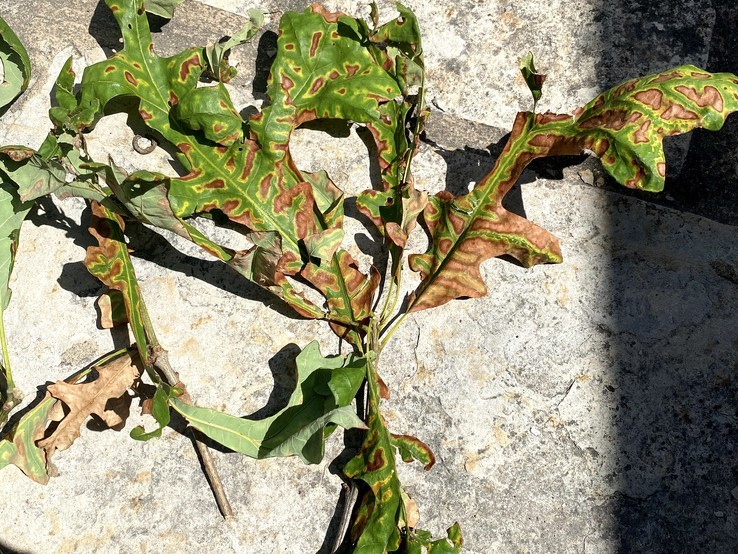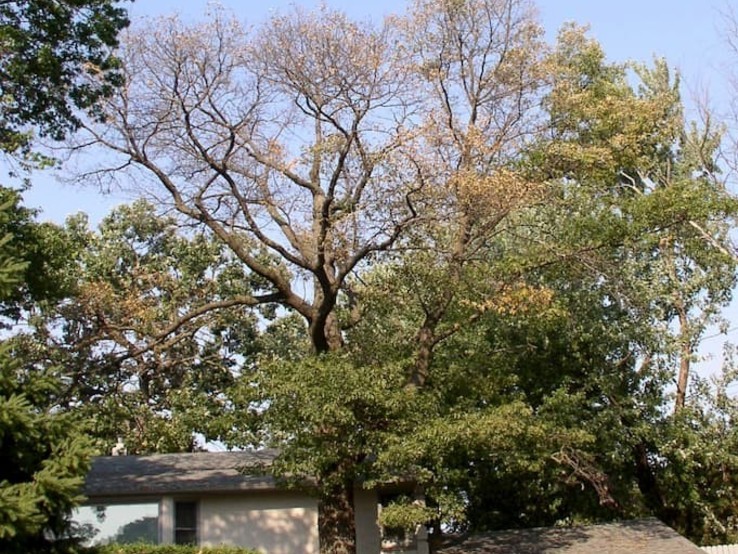How to identify Oak Wilt before it's too late
What Is Oak Wilt?
Oak wilt is a vascular wilt disease caused by a fungus that clogs the water-conducting (xylem) vessels of trees in the Beech family (predominately oak species but also chestnuts and several others).
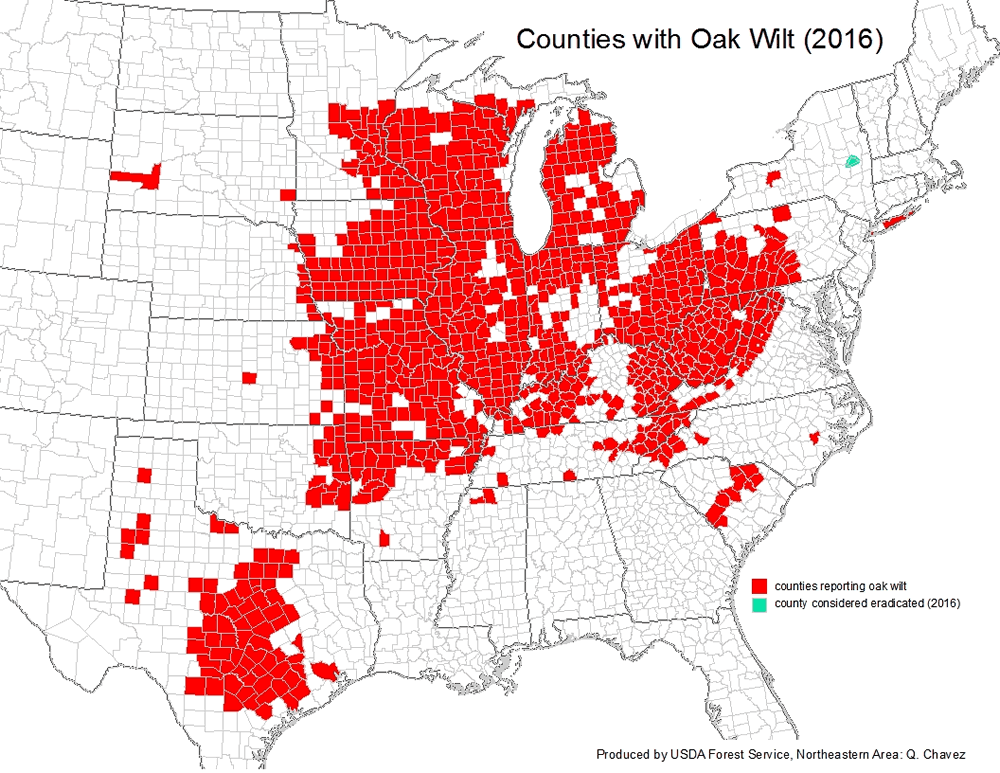
The severity and rate of mortality are also due in large part to the self-preservation response of the tree, in which the tree shuts down and kills most of its colonized tissue in order to compartmentalize or trap the fungus and limit its full movement within itself.
Oak wilt is the worst tree pathogen in Texas. It is in the top 5 tree pathogens in the USA. The national oak wilt map is eye-opening to the Texan as it clearly shows that our severe problem is actually only a small percentage of the total expanse of this disease. It is sobering to see how seriously our entire national tree cover is being affected by Oak Wilt.
What Does Oak Wilt Look Like?
 I manage thousands of acres of oak wilt in over a dozen counties within central Texas.
I manage thousands of acres of oak wilt in over a dozen counties within central Texas.
This amount of experience with the disease day in and day out throughout the year, with different cold- hardiness zones, elevations, soil types, annual rainfall variations, etc., has in a way provided me a state of the art “laboratory” by which I can form observations and continually improve the management plans I provide my many clients.
I’ve included a number of photo and video collections below of just some of my observations regarding this disease. One thing I want to stress here – many of these photos, videos, and DNA testing results call into question – further, require significant changes in current education and protocol regarding this disease.
Do you need help identifying oak wilt on your property?
Note: We are using Research Associates Laboratory to validate diagnoses and DNA testing to verify the various species in the images and videos below.
Read more about how the DNA-based Method Enhances Detection of the Oak Wilt Fungus
Oak Wilt Symptoms
Bigelow (a.k.a. Shin) Oak Symptoms
Mexican White Oak (a.k.a. Monterrey Oak) Symptoms
For more information and examples of Oak Wilt, check out our Youtube Channel
Live Oak Symptoms
Quercus fusiformis
The native Edwards Plateau Escarpment Live oak (by far the most extensive losses), Southern Live oak, and Coastal Live oak are obviously the most common focus of concern and management in Texas. This is because one, they are both the most prevalent varieties of oaks in Texas and two, they the most common tree species (both Coastal and Southern Live oaks are installed in this area too) in the hardest-hit area in Texas – the central Texas hill country - as well as three, the genetic proclivity of the Live oak varieties to more aggressively expand the mott by regular root sprouting and grafting and four, the common mixed-species motts with numerous red oak varieties contracting the disease and forming fungal mats.
The most typical symptom expressed is that of veinal necrosis – seen in the slightly aged brown leaf above. There are many examples of veinal necrosis below as well. There are numerous reasons why this is the classic leaf symptom BUT it is not the only leaf symptom.
Regularly I observe that the classic symptom does not represent even 50% of the symptomatic leaves on the ground or in the tree. Most importantly, there are often occasions when the classic leaf symptoms are few or even non-existent at the sites I visit. It is for this reason I have chosen to take photos of all the variations of symptoms I see and consequently look for during diagnosis, in order to better assist those in need of descriptive, thorough and accurate information to help them investigate a possible oak wilt situation.
Live Oak Foliar Symptoms List (roughly in order of frequency):
***Most All the below symptoms include leaf drop save for tufting, flashing, canopy yellowing, and
blitzkrieg ghosting, which may or may not exemplify full or partial marcescence.
-
Veinal Necrosis (with lateral veins or without)
-
Leaf Tip Burn (often with tip shriveling)
-
Leaf Margin Burn (often with leaf cupping)
-
Tufting
-
Bronze Wash
-
Veinal Chlorosis
-
Canopy Yellowing
-
Veinal banding
-
Chlorotic mottling
-
Blood-letting (winter color-change Live oaks only)
-
Blitzkrieg Ghosting
Spanish Red Oak Symptoms
Quercus buckleyi
Many of the native Red Oaks in the hill country are a mostly-pure Spanish Red Oak strain. I sometimes see some traces of Texana in them and more curiously – I often see Black Jack cross-pollination (or vice
versa) when these two are in close proximity to each other. The Spanish Red Oak is without a doubt the second most prevalent native oak species.
It is very unfortunate that more effort is not being made to help train property owners to find and destroy oak wilt infected red oaks. Beetles and paint is a moot point if sporulation of the infected red oaks isn’t allowed to occur due to a pro-active response.
I believe that significant effort in this one specific task would have one of the most powerful impacts on disease management and must become a major focus of efforts from here on out. In many cases there are not many fungal mats at any given time on any given 1000 acres, rather more likely 10-20, which is a manageable task to monitor and remedy.
Further, studies done in other states give us a reasonable belief that either the use of fungicide or herbicide can prevent sporulation without labor-intensive tree removal and destruction (burn, mulch). Red oaks routinely pass the fungus to other oak species within grafting distance.
Shumard Red Oak Symptoms
Quercus shumardii
Another non-native red oak – this one is actually one of my favorite oaks to plant if conditions are appropriate. It's quite a challenge for even a BCMA to find a pure specimen in most of these nurseries – more often than not it too is a “mutt tree” most often with Texana genes mixed in. When planted in oak wilt mortality centers – expect grafting once they have an established root system (6-8” DBH or more). I see it regularly.
One property in particular – a 14” Mexican White Oak (AKA Monterrey Oak)contracted oak wilt and died not far from the Shumard. In my estimation, it was most probably that the Shumard acquired the disease by grafting and most probably from the Mexican White Oak. These two trees are more often than not grouped together in landscape installations…
Black Jack Oak Symptoms
Quercus marilandica
The good tree with the cute duck feet-shaped leaves. The bad tree that possibly forms pressure pad fungal mats more consistently than Red Oaks. The ugly in that they are rare and many people are unaware how to identify them and therefore unable to proactively monitor them for possible contagion.
Northern Red Oak Symptoms
Quercus rubra
THE oak wilt oak - The one most studied in regards to oak wilt. The vast majority of losses in the Non-Texas states belong to this species. Not only does regular root-grafting or (underland spread) occur but this species also forms fungal mats regularly and new infections by spore-carrying vectors occur often (overland spread).
Mortality is very swift and frightening to those who lose numerous trees seemingly overnight. Often plowing or trenching isn’t an option for various reasons. The good news – herbicide containment works! More on that later…
Image Courtesy of Rainbow Treecare Scientific Advancements
Richard Webb, Bugwood.org Creative Commons License licensed under a Creative Commons Attribution 3.0 License.
David Lee, Bugwood.org licensed under a Creative Commons Attribution-Noncommercial 3.0 License.
David Lee, Bugwood.org licensed under a Creative Commons Attribution-Noncommercial 3.0 License.
Bigelow (or Shin) Oak Symptoms
Quercus sinuata var. breviloba
There is way too much confusion with nomenclature with this tree species. Many call it a (“bastard”) white shin oak, but there are four other oak species each with their own unique latin etymology that share the same common name. Generic names like shin or scrub actually make identification more of a challenge rather than easier – the purpose for common names to begin with.
This tree is also called a Limestone Durand Oak as it is genetically a sub-species of the Durand Oak (sinauta sinuata), but by way of recognizing the unique aspects of this tree – I prefer to call it most often the Bigelow Oak. Note the first picture – for those who know this tree by its very unique paper shell, exfoliating bark one would likely conclude it is undoubtedly a Bigelow.
Surprise surprise, the branching structure, leaf shape, and color is Live Oak. These two trees cross-pollinate. These two trees regularly graft. If one or the other gets oak wilt, one should anticipate the odds are quite high that most of the trees in neighboring or converged mots are connected. This white oak is not resistant to oak wilt!
Mexican White Oak (AKA Monterrey Oak)Symptoms
Quercus polymorpha
Often called the Monterrey oak, I strongly dislike this term as it has a connotation of uniqueness of
genetics and reclusive location. This tree will cross-pollinate and graft with dang near every oak – hence
polymorpha (i.e. many forms). It readily grafts with Live oaks, etc. that have oak wilt. The Mexican White Oak has similar mortality rate and the speed of mortality as Live oaks. There will be massive losses of this over-planted species and a secondary epidemic outbreak will occur in those locations where this tree was planted in heavy numbers. The Monterrey oak is not resistant to oak wilt!
Chinkapin Oak Symptoms
Quercus muehlenbergii

a Tennessee area Chinkapin in the middle.
All three without Oak Wilt.
This species is becoming a more prevalent selection as an “oak wilt resistant” shade tree. I can confirm that, the native Chinkapin or Chinquapin, which is quite reclusive and found mostly in riparian areas in the more mountainous areas in central Texas, does contract oak wilt from grafts both from Live Oak and Lacey Oak and Bigelow Oak, and it spreads it readily to other oaks within root-graft distance.
When it contracts this disease it will often die within the first two years. By contrast, the Chinkapin Oak grown/sold by most nurseries in region is not a pure genetic specimen from our area. The genetics are from out of state.This import does not not fare any better than their local region counterpart. I regularly see in these Chinkapins from the nursery - anatomical features of the Mexican White oak.
It is highly probable that these trees will not fare any better than their local region counterpart. For example over in Kansas, experts in that area of the country are saying, "Oak wilt can attack all species of oak, but the red oak group is most susceptible. This group includes northern red, shingle, shumard, blackjack, and pin oak. The white oak group is more resistant to the oak wilt fungus bur, chinquapin, post, and white oaks, may survive several years of infection." (our emphasis)
I will be watching these planted trees closely and suspect I will have a solid position on this tree quite soon. What I am certain of is that I regularly see in these Chinkapins from the nursery, anatomical features of the Mexican White Oak (AKA Monterrey Oak). As mentioned above, the Mexican White Oak will continue to cross with other oaks and make the likelihood of mortality only worsen for their crossbred progeny. In a later section, we will cover the serious implications for tree nurseries and landscape tree design and install.
Lacey Oak Symptoms
Quercus laceyi
Also known as the Blue oak. Beautiful tree. Yes, this tree spreads oak wilt at the same speed as well as has as high of a mortality rate as Live Oak.
This white oak species is not resistant to oak wilt!
One of the videos I’ve taken recently is of a transference of oak wilt from a brand new Live Oak mortality center to a multiple neighboring Lacey Oaks. Within another recent video, I have captured a large Lacey Oak mortality center with a transference into a Spanish Red Oak mott.
Post Oak Symptoms
Quercus stellata
Would it be a bit interesting if you happened to hear a Texas Forest Service agent say if they had numerous Post oaks and one got oak wilt – that forester would proceed with injections – even up three times? Maybe confusing?
Often when I see Post oak mortality centers – I see ample evidence of canker scaring on the trunks. All too frequently the dismissive, inexperienced, and possibly lazy investigator concludes immediately that drought caused hypoxolon to overtake and kill all those trees. I am here to tell you emphatically that I regularly see active hypoxolon sporulation on Live oaks, Spanish Red oaks, Lacey oaks etc. at the later end of dying from oak wilt. Years later, the only evidence that may be left will likely by the hypoxolon canker scars – does that mean there was never any oak wilt present?!? Further challenging the faulty assumption of the drought and hypoxolon as sole cause – how do those with their rote “oak wilt resistant” cover story explain continuation of mortality after multiple years of good rainfall amounts and frequency?
It is possible that Post oaks, while they don’t die immediately from oak wilt (like the Bur oaks in the upper Midwest – see below), very well may succumb to hypoxolon as a result of the weakened health. I am not equating all or even half of hypoxolon scaring to oak wilt – just that it is very likely and probable that some of those cases are a result of a weakened tree due to the virulent oak wilt pathogen. Very often the leaf symptoms are hard to differentiate from other causes – not nearly as easy as Live oaks. The Post oak is tolerant of oak wilt – i.e. it takes the longest to die.
Bur Oak Symptoms
Quercus macrocarpa
Bur oaks (along with the White oak – Quercus alba) are regularly treated for oak wilt in order to prevent mortality in the Upper Midwest. Not only is this white oak NOT resistant - the US Forest Service has officially confirmed that they do form fungal mats, albeit rarely.
A Minnesota DNR forester during a Sustainable Forests Webinar, distinguishes between “susceptibility” of the red and white oaks in this way – they both can and will acquire to disease by way of overland vector or by root system (assuming both wounded and visited by a beetle or grafted to a neighboring infected tree), therefore both are equally susceptible.
The “resistance” between the two he explains in this fashion – Red oaks always die and do so much faster, while the native white oaks will take one or more years to progressively die unless treated with fungicide. Personally, I would only accept the use of the term “resistant” for a tree who acquires oak wilt and can on its own record fight it off and or live with it in such a way that the tree’s value not only doesn’t diminish but it continues to increase as it continues to grow. Doesn’t that sound like a more accurate and appropriate use of the term…?
Also, quite pertinent here – Dr. William MacDonald during a presentation at a Symposium in Pittsburg, makes a very strong remark about the surprise and great concern that occurred by expert here and especially those in England when two of the greatest European oaks – Quercus robur (English oak) and Quercus petraea – Sessile oak were inoculated with oak wilt spores here in the U.S. and the mortality response was very similar to Red Oaks!
Without intensive research showing routine capacity of any oak to resist the fungus effectively on its own – no positive claim of resistance should be made! This must become the new protocol adopted by those who wish to responsibly educate and fight this disease with an eye to the future.
Joseph OBrien, USDA Forest Service, Bugwood.org
© licensed under a Creative Commons Attribution 3.0 License.
White Oak Symptoms
Quercus alba
This oak is not found in Texas. I have included it as I’m trying very deliberately to affect a greater cohesion of experience, knowledge and practice/protocol within the nation and especially here in Central Texas.
This tree is namesake of the Family of White Oak species – I wonder if its “resistance” to mortality from oak wilt (may not die from it and slow dieback anywhere from 5-20 years) appears to be the consensus of most every Northern state where they grow naturally.
Regardless – a tree slowly dying that more often than not needs fungicide to stop the slow-motion death, is not a tree thriving and growing and providing beauty and the promise of centuries of grandeur as one would be accustomed to from this stately, long-lived king of oaks by which the ink which signed the Declaration of Independence came from galls acquired from this species.
Images Courtesy of Rainbow Treecare Scientific Advancements
Fred Baker, Utah State University, Bugwood.org
© licensed under a Creative Commons Attribution 3.0 License.
European Oak Symptoms
Quercus patraea – Sessile oak; Quercus Robur – English oak; Quercus pubescens – Downy oak; Quercus suber – Cork oak; Quercus ilex – Holm oak
Why include oaks from another continent here?
- First, a number of these white oak family species are already planted here and cross-breeding with our native white oaks – making this information quite cogent.
- Second, a pathogen and its effects - the more thoroughly studied and understood, adds depth to our knowledge base of that pathogen and its host species.
- Thirdly, if it could pose a serious and devastating effect to Europe if the pathogen found its way there by accident due to an uninformed person – we should answer that question and disseminate that information to all good-willed people and make the appropriate protective laws required.
A multi-stage study of the above five European white oaks by inoculation of seedlings in 1984, 1986, and in 1987-1988 a “Short-term Susceptibility Test” was conducted by J. Pinon and Dr. W. L. MacDonald as a precursor to a massive later inoculative “Long-term Susceptibility Test” in 1996. The inoculations of these five species yielded extremely concerning preliminary results for all five white oak species in this author’s estimation as well as the scientists who stated: “In West Virginia 100% of all trees from all provenances, including Q. alba and Q. rubra controls, developed wilt symptoms (Table 2). Symptom expression was dramatic and mortality often occurred by the end of the season (Pinon et al. 1988).”
Below is the pre-eminent final, part-two study that tackled the question of three of European white oaks above and their capacity to tolerate the oak wilt fungus.
(Follow this link to purchase the book: Shade Tree Wilt Diseases)
Findings: “The most significant finding from this research is that symptom development among [these three] European white oak species is rapid, complete, and very similar to the high degree of susceptibility expressed by North American red oaks.” Little resistance was demonstrated by these European white oak species as “most of the European white oaks were dead or dying by the end of 1996, the year of their inoculation… This outcome was not anticipated… The critical message for arborists in the United States is that European oaks are highly susceptible to oak wilt and their use and care in landscape settings should be considered cautiously...”
The European Union, Clemson University, West Virginia Universities and the INRA (French organization) funded and conducted this incredibly important experiment. The EU has established stringent rules for imports of any oak item into Europe –the UK has established a complete moratorium of any oak item and also has established extreme measures of handling any occurrence of oak wilt.
We would do well to follow suit and conduct similar inoculations on all species of North American Oaks of mature size prior to irresponsible and ignorant assumptions of theoretical resistant designations. California especially should consider this effort prior to the inevitable arrival of this disease.
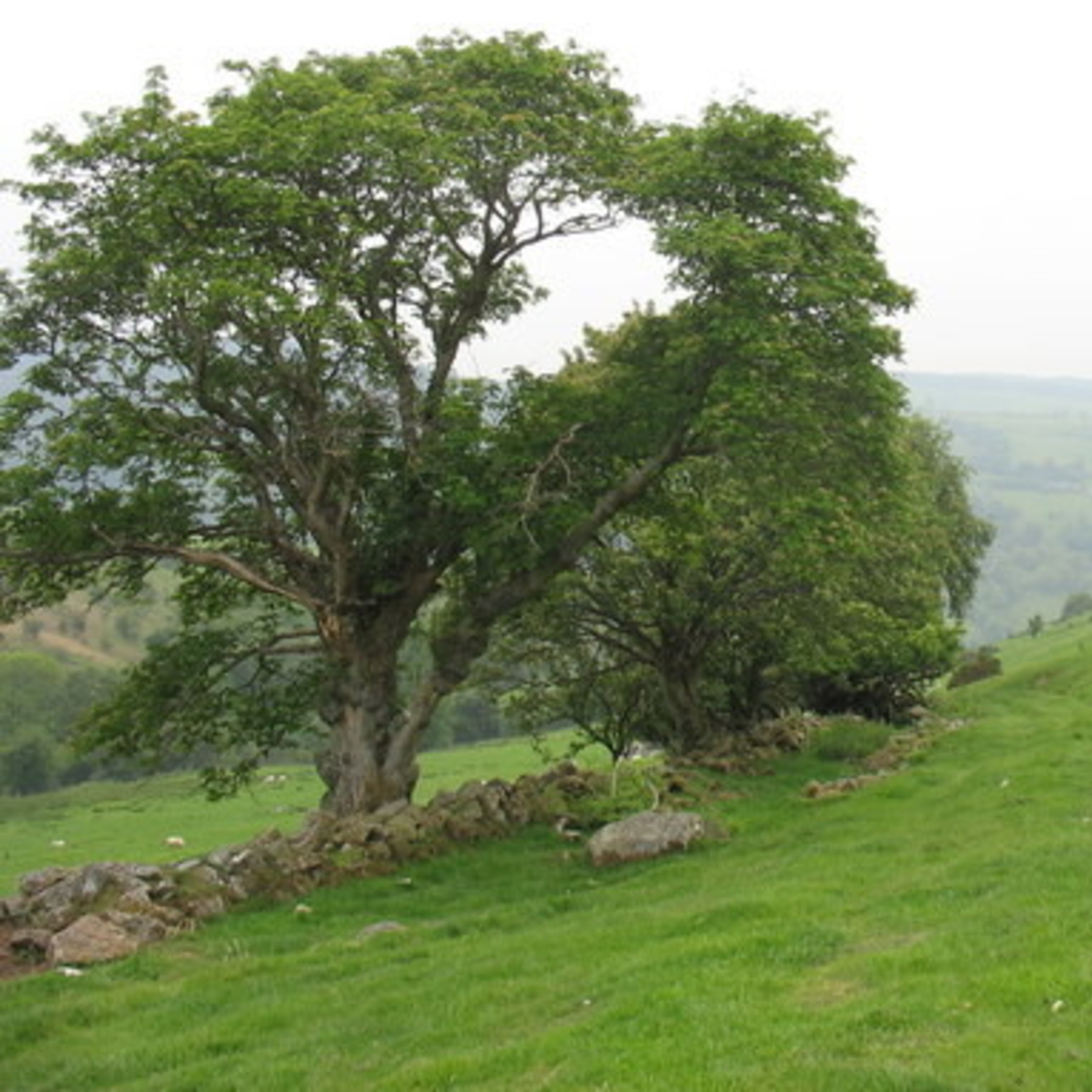
Sessile Oak - Quercus petraea
© Copyright Eric Jones and licensed for reuse under this Creative Commons Licence.
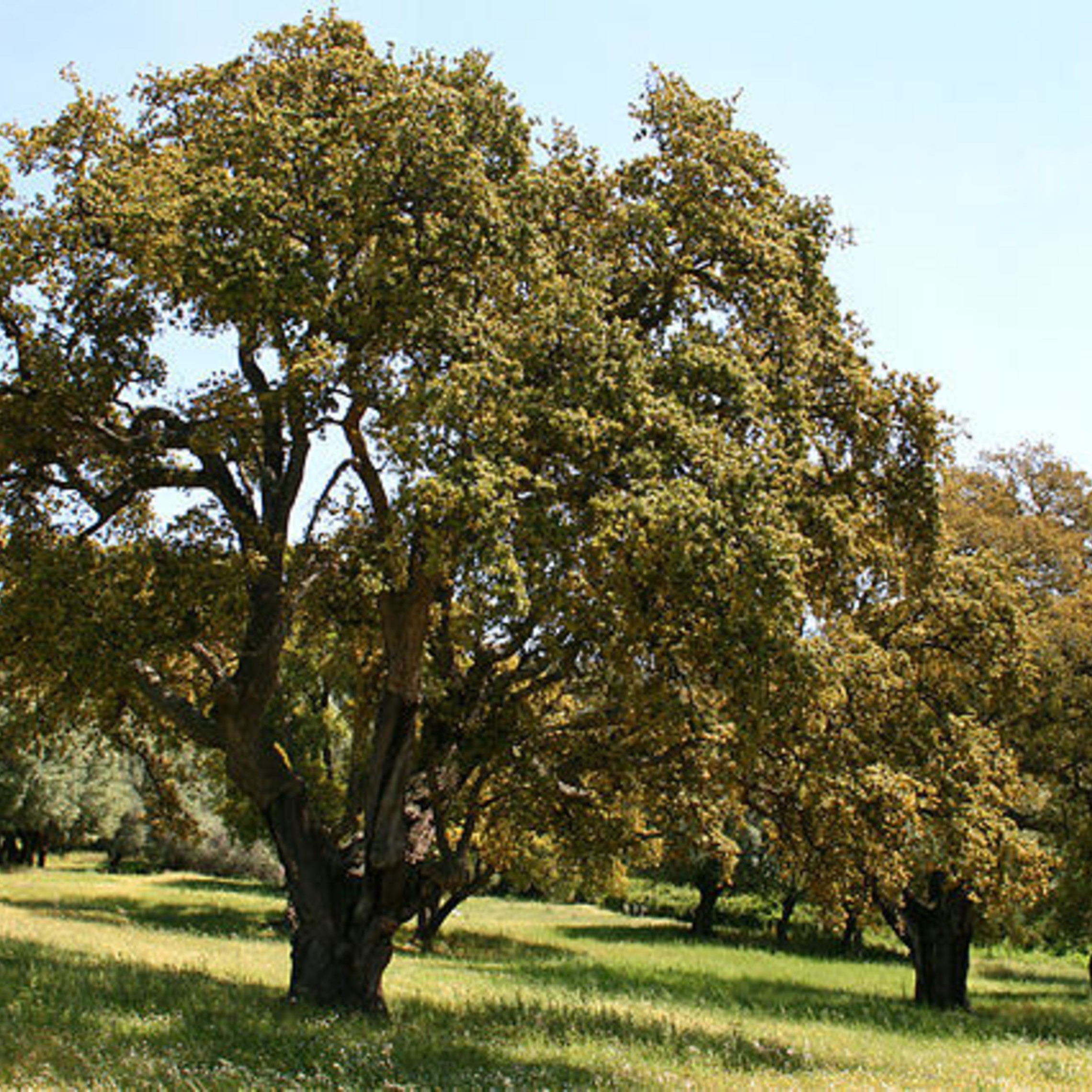
Cork Oak - Quercus suber
© Copyright Jean-Pol GRANDMONT and licensed for reuse under this Creative Commons Licence.

English Oak - Quercus robur
© Copyright Colin Craig - licensed for reuse under the Creative Commons Attribution-ShareAlike 2.0 license.
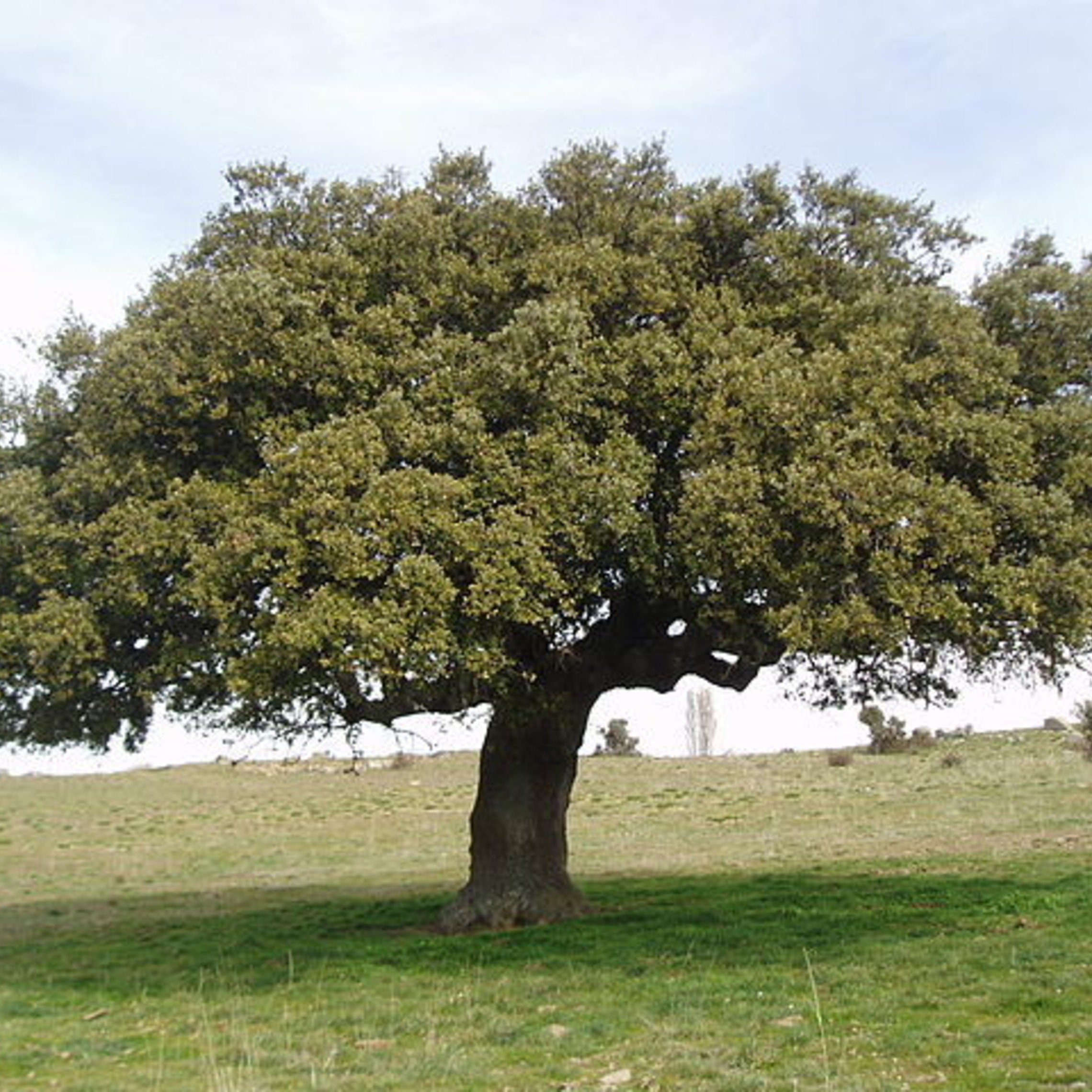
Holm Oak - Quercus ilex
© Copyright Propio and licensed for reuse under this Creative Commons Licence.

Downy Oak - Quercus pubescens
© This file is licensed under the Creative Commons Attribution 2.0 Generic license.





